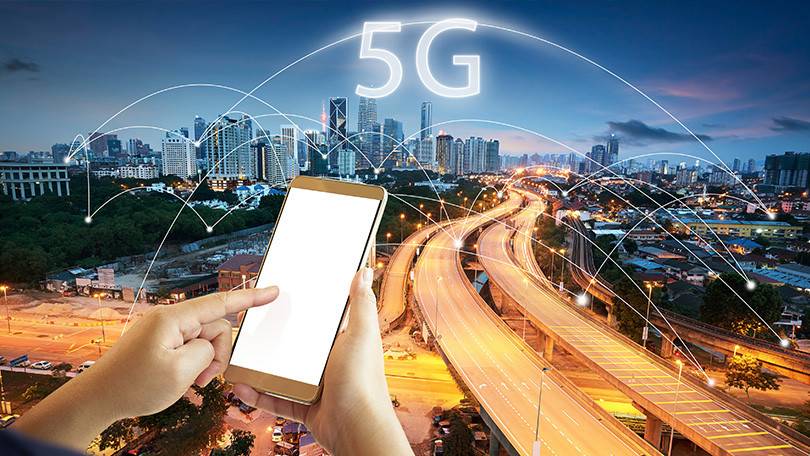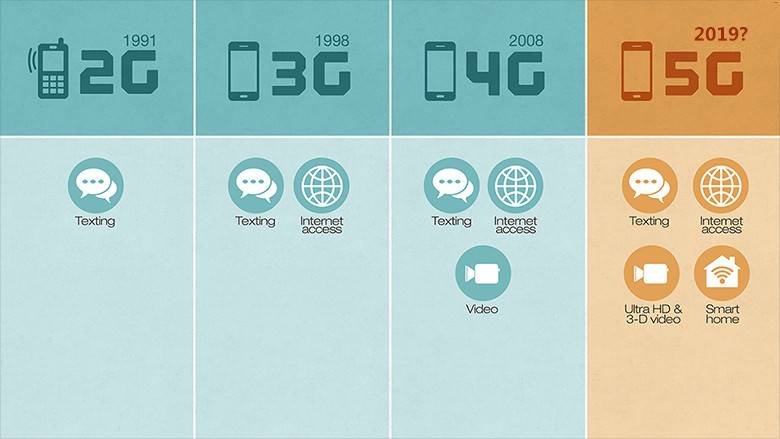What is the 5G network and why is it an urgent necessity?
5G stands for the fifth generation of the next wireless mobile standard. The 5G New Radio (NR) specification was published by the 3GPP standards body in late 2017. The performance goals of the updated 5G include high data rate, lower latency, energy saving, cost reduction, higher system capacity, and massive device connectivity.

Faster speed: 5G vs. 4G
What is the speed of 5G? It is estimated that data transmitted through 5G wireless broadband communications can travel at speeds of up to 20 gigabits per second. Unlike 4G, 5G wireless signals are transmitted through a large number of small cell stations located in places such as light poles or building roofs. As a result, the demand for optical fiber receivers deployed in 5G stations will increase accordingly.
Lower latency with higher system capacity
The 5G network significantly reduces latency with faster loading times. It is estimated to provide a latency of 1 millisecond or less for applications that require real-time feedback. This means you will experience very little or no latency when browsing on networked devices.
| Network type | delay (ms) |
| 3G | 120 ms |
| 4G | 45 ms |
| 5G | 1 ms |

Thanks to the available bandwidth and advanced antenna technology, the 5G network allows for a significant increase in the amount of data transmitted through wireless systems. Meanwhile, the costs associated with the 5G network will drop significantly.
Connect more devices
Another main goal of 5G is to significantly improve the quality of service and spread this quality over a wider geographical area. 5G network architectures are likely to be networks of small cell stations, even the size of home routers or data switches, rather than massive towers that span large distances. The more stations, the more devices can be connected to the network.
How does 5G work?
Due to the increase in data transfer speed, the deployment of 5G needs to upgrade the optical transport network. Compared with the two-level architecture of BBU and RRU of 4G LTE access network, 5G RAN is transformed into a three-level structure of CU (Concentrated Unit), DU (Distribution Unit) and AAU (Active Antenna Unit).
From an intermediate and backhaul point of view, there is a demand for networks with high capacity and scalability now, and the use of WDM is becoming more common. WDM systems based on coherent or incoherent silicon photonics 100G, 400G networks will become mainstream in the future. DWDM system is flourishing but needs better flexibility and manageability.
No matter what kind of network implementation is hosted by 5G technology, the 5G communication optical module is ultimately essential. Cost-effective and high-rate optical receivers that can support long-distance transmission are the most powerful backup to achieve wide and low-cost 5G network coverage. The future development of 5G communication optical modules will be dominated by 25G optical modules and 100G optical modules. To pave the way for the future 5G network, the first step is to scale the industrialization of the 25G tunable optical module, and then minimize the cost of the 100G optical transceiver, especially in long-distance transmissions. 5G communication optical modules. We are developing standard communication 5G optical modules including 25G SFP28, 100G QSFP28 and DWDM transceivers to meet the industry standard of 5G network.

 سوئیچ شبکه
سوئیچ شبکه انتقال خطوط تلفن
انتقال خطوط تلفن ماژول فیبرنوری
ماژول فیبرنوری مبدل های فیبرنوری
مبدل های فیبرنوری پچکورد و پیگتیل فیبرنوری
پچکورد و پیگتیل فیبرنوری

نظرات کاربران